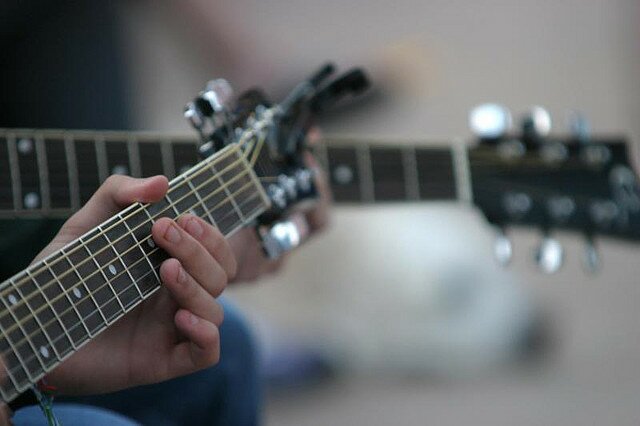
The Harmonic minor scale differs from the natural minor in that it has a natural 7th instead of a flat 7th. This means you have a tone and a half between the flat 6th and the natural 7th. This is where the scale earns its individual tone. The sound created by this unusually large interval gives the scale a mystical, classical feel. Perfect for creating a solo that stands out a little more than if you were to just use the natural minor. That’s not to say you can throw this scale over any chords, because of its slightly unusual tone you have to use your ears a little more and take care that your notes don’t clash with the chords you are accompanying.
Below are the seven shapes of the harmonic minor scale. Once again, the shapes have all been placed in the key of A minor for the purpose of the TAB. Watch out for the big stretch between the flat 6th and the natural 7th as you learn the shapes!
A Harmonic Minor Scale Position One:

A Harmonic Minor Scale Position Two:
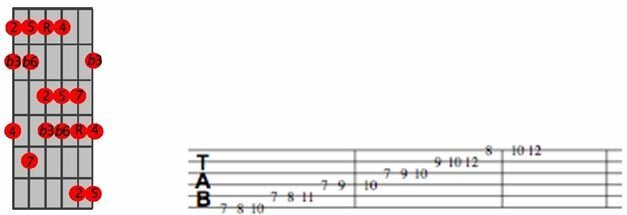
A Harmonic Minor Scale Position Three:

A Harmonic Minor Scale Position Four:
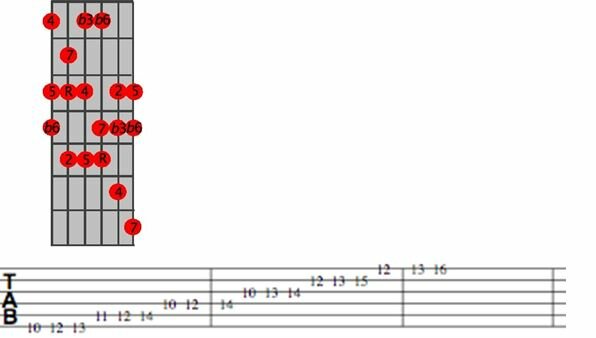
A Harmonic Minor Scale Position Five:
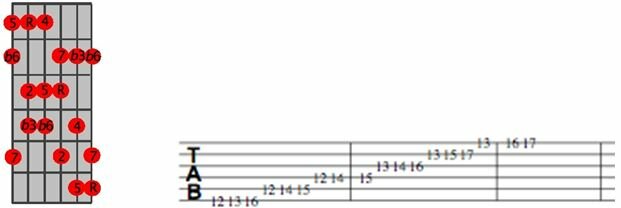
A Harmonic Minor Scale Position Six:
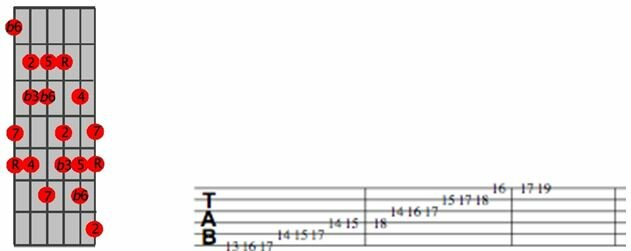
A Harmonic Minor Scale Position Seven:
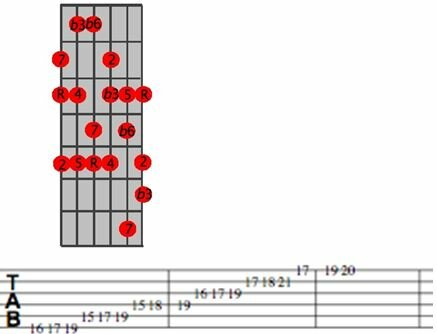
Below is an example of how you can use this scale to create a solo. Learn the example and try and think about what notes are being used over what chords. You’ll notice that when playing over the A minor chords, playing the flat 6th and stepping up to the 7th will really emphasise the sound of the scale. When the chords change, see how the focus on the notes changes to the root notes of the new chords. Remember, another option is to change the scale so you are playing it in the key of the new chord. This is the case when the solo reaches the Bm. The scale is simply moved up two frets (one tone) so that it is now in the key of B minor.
RELATED Different Parts of The Guitar Explained
image credit – lovstromp



